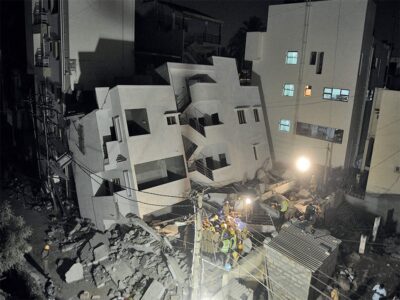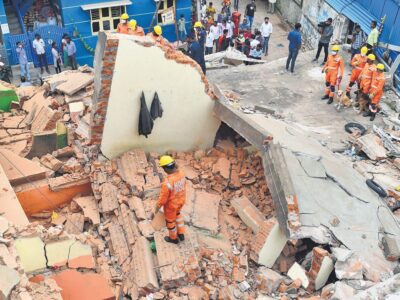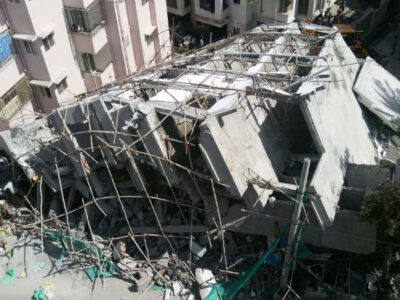- Unsafe civil engineering designs and construction by unqualified engineers lead to frequent building failures.
- Inadequate civil engineering practices cause leakages that lead to corrosion and reduce building durability.
- Poor civil engineering in road construction results in potholes and poor road conditions due to insufficient thickness, lack of camber, and improper drainage.
- Ineffective infrastructure design causing flooding of roads and underpasses, damaging urban transport routes and disrupting daily commutes.
- Faulty civil engineering approaches in remodelling key buildings and infrastructure causes planning and execution issues.
- Inadequate enforcement and outdated civil engineering regulations lead to widespread building violations and lack of required structural designs.
- Unscientific civil engineering priorities in zoning regulations result in planning inefficiencies regarding FAR, road widths, and building heights.
- Lack of frameworks to hold civil engineers accountable undermines industry standards.
- Poor civil engineering practices and non-technical personnel contribute to water, soil, and air pollution.
- Lack of civil engineering oversight results in widespread illegal encroachments on lakes and stormwater systems.
- Absence of regulatory bodies for civil engineering updates hinders industry progress and adaptation.iencies.
- Inappropriate individuals entering the unregulated civil engineering field compromise safety and quality.
- Civil engineering lacks formal legal recognition similar to professions like CA or MCI, leaving engineers vulnerable.
- Technical organisations led by non-technical personnel impact the effectiveness of civil engineering projects.
- Regulations framed by non-experts result in unrealistic and unsustainable civil engineering codes.
- Insufficient representation of qualified civil engineers in decision-making bodies affects industry standards and policies.
- Insufficient awareness of current civil engineering practices and legal procedures leads to disputes and inefficiencies.
Sample of The Journey of Enactment of KARNATAKA PROFESSIONAL CIVIL ENGINEERS ACT-2024
The Journey of Enactment of KARNATAKA PROFESSIONAL CIVIL ENGINEERS ACT-2024
KARNATAKA PROFESSIONAL CIVIL ENGINEERS ACT-2024
How KPCEA-SC Addressing these Challenges











